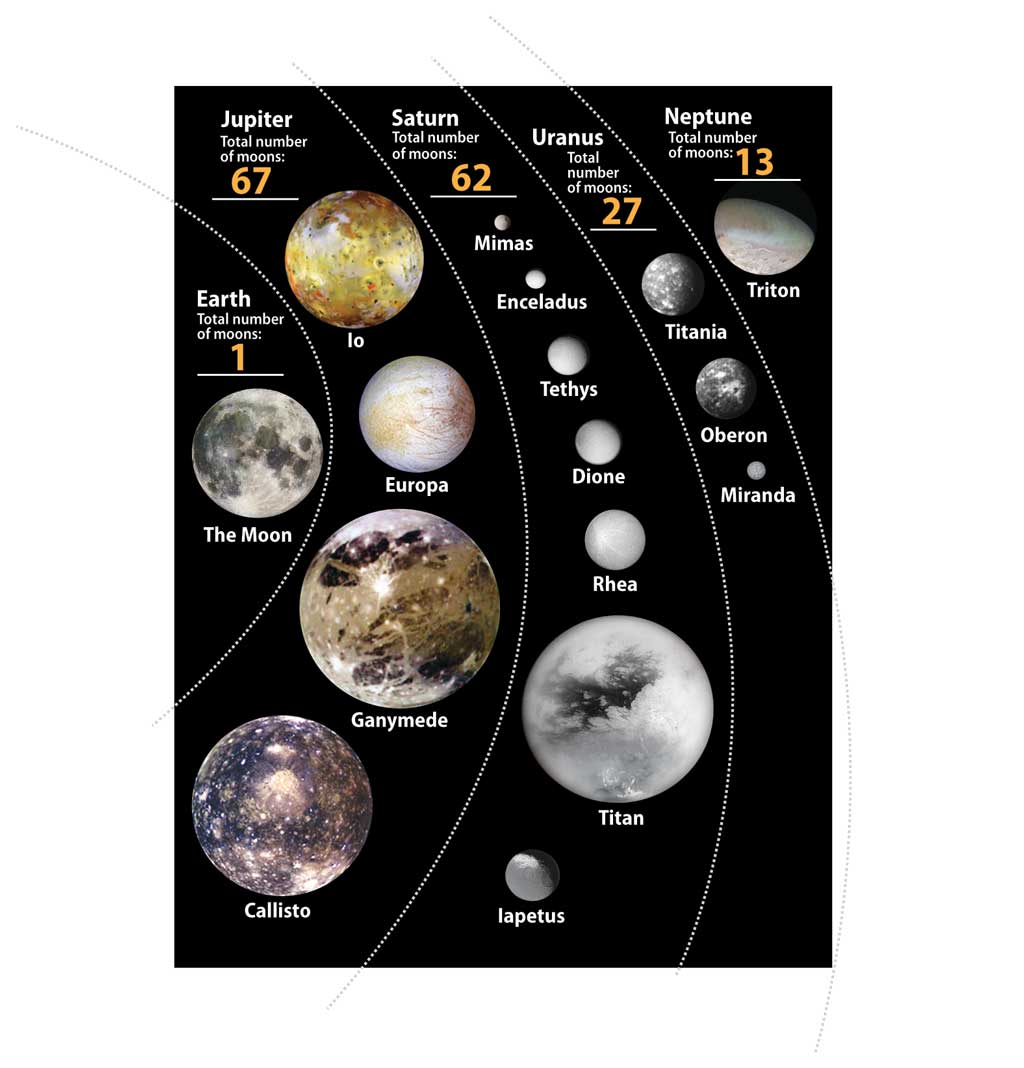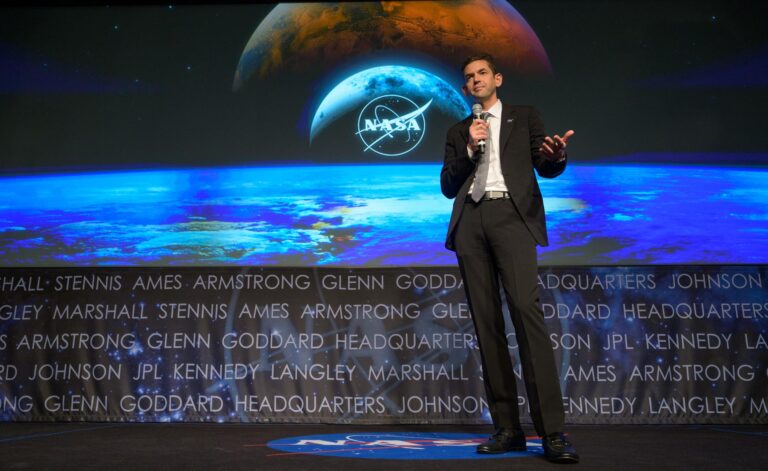Key Takeaways:
- The number of moons a planet possesses correlates strongly with its location of formation within the solar system; inner, terrestrial planets have few moons, while outer, giant planets have many.
- Giant planets' large masses and the presence of icy material during their formation facilitated the accretion of numerous regular moons orbiting near their equators in nearly circular paths.
- Giant planets' strong gravitational influence also allows for the capture of smaller, irregular moons with eccentric and inclined orbits.
- Terrestrial planets, having formed closer to the Sun with less surrounding material, grew less massive, hindering the formation of many moons; Earth's moon likely formed from a collision, while the origin of Martian moons remains uncertain, and those of Mercury and Venus may have been lost due to solar proximity.
The larger volume of space and lower gravity of the Sun in the giant-planet region allowed Jupiter, Saturn, Uranus, and Neptune to form like solar systems in miniature. We think each of them pulled in lots of material and had a disk of gas, dust, and ice surrounding it during formation. Any dust and ice not incorporated into the planet itself would have coalesced into the regular moons we see today around the giant planets. These satellites are in nearly circular orbits near the equators of their host planets, such as the four Galilean satellites around Jupiter and Titan around Saturn, which are all composed of large fractions of ice.
Because the giant planets gravitationally dominate a very large area, they also can efficiently capture passing objects as moons, which we call irregular satellites. These irregular moons are relatively small and have orbits with large inclinations, eccentricities, and semimajor axes.
In contrast, the terrestrial planets formed much closer to the Sun with much less material around them. They grew slowly by accreting many small rocky planetesimals and never grew massive enough to capture a disk of gas and dust. Earth’s Moon probably formed through a direct collision. Any large object striking a planet would have thrown material off the world into orbit, allowing it to coalesce into a moon.
Mars’ moons are still a bit of a mystery — they could result from a giant collision, or they could be captured asteroids. Mercury and Venus might have had moons in the past, but their close proximity to the Sun means most satellite orbits around these planets would be unstable over the solar system’s age. — Scott Sheppard, Carnegie Institution of Washington, D.C.










